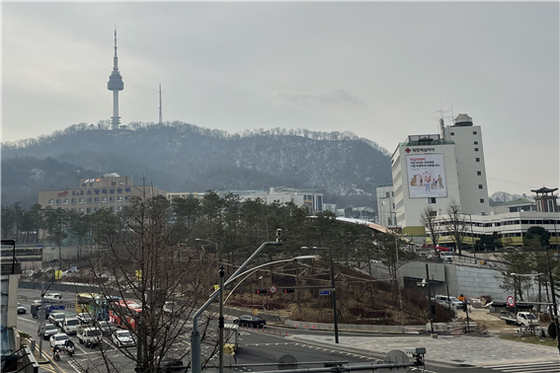The foot of Namsan Yejang, where’Yejang’, a martial arts training ground for the Joseon Dynasty soldiers, returns to the park.
Seoul City, Yejangteo Park opened on January 1st, next year
A memorial plaza recreated in the former Central Intelligence Agency’s torture office was also created.
The city of Seoul announced on the 30th that the upper part of Namsan Yejang, which was damaged during the Japanese colonial rule, will be turned into a green park and open from the first day of the new year. The park built at the foot of Namsan Yejang is 22,833m2. The city of Seoul has been working on a park since 2015, such as demolishing the TBS Traffic Broadcasting Station and the Namsan 2nd Office Building.
![Namsan Yejang's foot back to the park. It was used as a martial arts training ground for soldiers during the Joseon Dynasty. [사진 서울시]](https://i0.wp.com/pds.joins.com/news/component/htmlphoto_mmdata/202012/30/c987ed39-e27f-49e4-a434-c7bf89fd5ba3.jpg?w=560&ssl=1)
Namsan Yejang’s foot back to the park. It was used as a martial arts training ground for soldiers during the Joseon Dynasty. [사진 서울시]
Yejang Forest was created at the entrance of Yejang Hill, which is adjacent to Myeongdong Station of Subway Line 4. The city of Seoul has planted a total of 62,000 trees, including 1642 trees (18 species), including pine trees, a native species of Namsan, and shrubs such as four-year-old trees. The city of Seoul named one of the pine trees planted in this forest’that pine tree on Namsan Mountain’. The Seoul Metropolitan Government explained, “I named the tree as a phrase of the national anthem that the independence activist sang with desperate desire to find the country.”
Considering the fact that the former Central Intelligence Agency was located at the top of the park, Seoul also built a’Memorial Plaza’ that reproduces the underground office of the Central Intelligence Agency. The aim is to remember not to forget the painful history. The Seoul Metropolitan Government said, “The underground torture room of the former Central Intelligence Agency, which was notorious as a torture during the military dictatorship, was reproduced in the basement of the square, and the ground will be operated as an exhibition room.” In front of the plaza, there was also a ‘Yugu Site’ that preserved a part of the ruins of the remains of the Joseon Government-General’s Office discovered during the excavation process.

Namsan Yejang’s foot back to the park. The remains of a part of the foundation of the building of the Joseon Government-General’s Office located here.
There is a pedestrian bridge in the center of the park. You can walk from Myeong-dong to Namsan Park and Hanok Village along the pedestrian bridge. The underpass for vehicles at the entrance of Namsan Tunnel 1, which was used exclusively for vehicles, will be turned into a’pedestrian tunnel’.
A bus parking lot (1,6992m2) will be established in the lower part of the green park. It is also used as a bus parking lot for tourists visiting Myeong-dong. There are a total of 41 parking lots, 30 for buses and 10 for sightseeing buses. Transfers to the Seoul Green Circulation Bus also take place here. The operation will start next March.
A memorial hall for Lee Hoe-young, Udang, an independence activist who founded the Shinheung Military Academy, will be built in part of the transfer area. The memorial hall will be open from next May. Ryu Hoon, head of the Urban Regeneration Office in Seoul, said, “The foot of Namsan Yejang, which was isolated for over a century after being damaged during the Japanese colonial rule, has been reborn as a space for citizens.” I look forward to it.”
Reporter Kim Hyun-ye [email protected]
